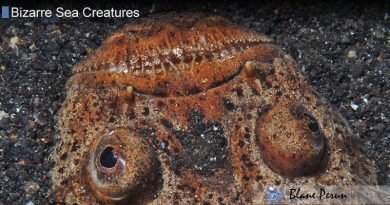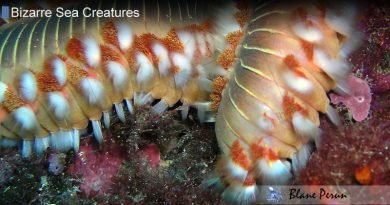Stygiomedusa Gigantea
Stygiomedusa gigantea
Stygiomedusa gigantea is one of the most mysterious and awe-inspiring jellyfish species known to science. Dwelling in the deep, pitch-black zones of the ocean—often between 800 and 1,700 meters below the surface—this giant jellyfish captivates marine researchers and ocean explorers alike. With its vast, bell-shaped body and long, flowing oral arms, Stygiomedusa gigantea is both elegant and enigmatic, embodying the beauty and mystery of life in the deep sea. Despite its impressive size, the species remains elusive, with fewer than 120 recorded sightings in over a century. As new technology allows us to explore these extreme depths, more is being revealed about this mesmerizing creature and its place in the ocean’s hidden ecosystems.
Introduction: The Deep-Sea Phantom
Sometimes called the “phantom jellyfish,” Stygiomedusa gigantea lives in the bathypelagic realm, a world devoid of sunlight and teeming with strange, alien-like organisms. Its name derives from “Stygio”—relating to the River Styx of Greek mythology—and “medusa,” referencing the jellyfish’s umbrella-shaped form. This poetic name captures its ghostly appearance as it drifts silently through the darkness, arms trailing like long, black ribbons. The creature’s interactions with other deep-sea inhabitants, such as the sunfish, offer scientists clues about predator-prey relationships in the abyss and the intricate dynamics of deep-sea food webs.
Physical Characteristics
The Bell and Oral Arms
The bell of Stygiomedusa gigantea can reach up to one meter in diameter—an extraordinary size for a jellyfish. Instead of the typical stinging tentacles found in most jellyfish species, it possesses four long, ribbon-like oral arms that can extend over 10 meters. These arms serve as multifunctional appendages, believed to help capture prey by creating gentle water currents that draw smaller organisms toward the jellyfish’s mouth. They also may assist in locomotion, allowing the jellyfish to pulse gracefully through the water.
Coloration and Appearance
The jellyfish’s translucent, reddish-brown coloration provides near-perfect camouflage in the deep sea. This hue is particularly effective in the bathypelagic zone, where red light cannot penetrate, rendering the jellyfish nearly invisible to both predators and prey. Its movements are slow and deliberate, giving it a haunting, ethereal quality that has fascinated scientists and filmmakers alike.
Habitat and Distribution
Depth and Environment
Stygiomedusa gigantea inhabits the mesopelagic and bathypelagic zones, typically between 700 and 2,000 meters deep. These zones are characterized by crushing pressure, cold temperatures, and perpetual darkness. Despite these extreme conditions, this jellyfish has adapted perfectly to life in the deep ocean, demonstrating the remarkable resilience of deep-sea organisms. Its presence in such depths parallels the survival strategies of other deep-water species such as the barnacle species found clinging to hydrothermal vents and abyssal ridges.
Global Distribution
Although rare to observe, Stygiomedusa gigantea appears to have a cosmopolitan distribution. Recorded sightings have occurred in the Gulf of Mexico, off the coasts of Japan, in the Pacific Ocean, and near Antarctica. This widespread presence suggests that the species is not necessarily rare but simply difficult to study due to its remote and inhospitable environment. Most sightings have been made using remotely operated vehicles (ROVs) equipped with cameras designed for deep-sea exploration.
Feeding and Ecological Role
While the precise diet of Stygiomedusa gigantea remains uncertain, scientists believe it feeds on small fish, crustaceans, and planktonic organisms that drift through the water column. The jellyfish’s immense oral arms likely function as both sensory and feeding structures, gently ensnaring prey as it floats. Interestingly, its interactions with large predators such as the sunfish provide insight into complex deep-sea food chains. The jellyfish’s role as both predator and prey contributes to the overall energy flow within these remote ecosystems, linking midwater organisms with apex predators of the deep.
Behavior and Adaptations
Locomotion and Movement
Unlike fast-swimming jellyfish species found near the surface, Stygiomedusa gigantea moves slowly through the water, pulsing gently with its bell. This slow locomotion conserves energy in the nutrient-scarce environment of the deep sea. Its flexible oral arms, undulating like curtains in a current, may also help stabilize its motion and channel microscopic prey toward its mouth.
Deep-Sea Survival Strategies
The species’ lack of tentacles and its simplified anatomy are thought to be evolutionary responses to its dark, low-energy habitat. Its gelatinous structure allows it to withstand immense pressure without damage, while its deep red pigmentation conceals it from predators. Like other abyssal creatures, Stygiomedusa gigantea thrives in an environment where light, warmth, and food are scarce—an extraordinary feat of adaptation comparable to that of the Crossota norvegica jellyfish, another deep-sea species that exhibits remarkable bioluminescent adaptations.
Scientific Discovery and Observation
First described over a century ago, Stygiomedusa gigantea has remained one of the ocean’s most enigmatic creatures. Fewer than 120 confirmed observations have been documented worldwide, mostly by ROVs and deep-sea submersibles. Each sighting contributes valuable data about its morphology and behavior, yet much remains unknown about its reproduction, lifespan, and population density. The limited number of encounters makes every discovery an event of scientific importance, enhancing our understanding of deep-sea biodiversity.
Conservation and Environmental Impact
Although Stygiomedusa gigantea lives in depths largely untouched by human activity, it is not immune to environmental change. Climate-driven shifts in ocean temperature and chemistry can impact the deep-water currents that distribute nutrients and oxygen, potentially affecting this species’ habitat. Furthermore, deep-sea mining and pollution from microplastics threaten even these remote ecosystems. Preserving this species is vital, as it serves as an indicator of the deep ocean’s overall health and resilience. Protecting creatures like Stygiomedusa also helps safeguard the intricate networks that sustain oceanic life, from surface dwellers like the sea angel to deep-sea giants.
Conclusion
Stygiomedusa gigantea is a haunting reminder of how much remains undiscovered beneath the waves. Its graceful movements, immense size, and mysterious nature make it one of the ocean’s most captivating inhabitants. Studying this elusive jellyfish not only expands our understanding of marine biology but also highlights the fragile balance of deep-sea ecosystems. As technology continues to reveal the ocean’s hidden depths, creatures like Stygiomedusa gigantea will continue to inspire awe, reminding us of the vast and unexplored beauty of our planet’s final frontier.




